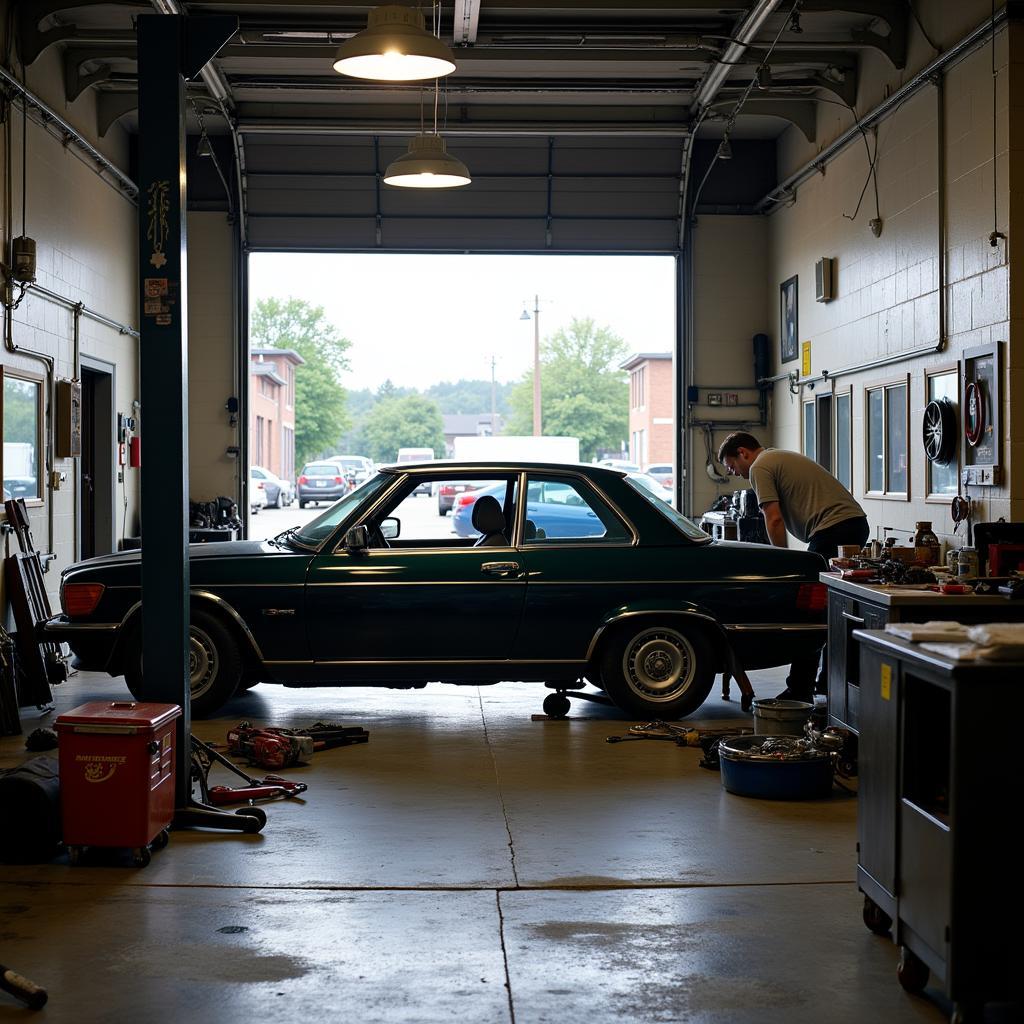When your car’s AC goes out, it’s more than just an inconvenience – it’s a recipe for a sweaty, uncomfortable ride. Finding reliable places to take your car to get your air conditioner fixed can be a challenge. Do you go with a dealership, a specialized auto shop, or maybe even give DIY a try? This guide will help you navigate the different options, understand potential costs, and make the best choice for your car AC repair needs.
Understanding Your Car AC Problems
Before you rush to the nearest mechanic, it’s helpful to have a basic understanding of what might be wrong with your car’s AC. Here are a few common culprits:
- Refrigerant Leak: This is one of the most frequent issues. Refrigerant is the lifeblood of your AC system, and leaks can lead to poor cooling or complete AC failure.
- Compressor Issues: The compressor is the heart of the system, pressurizing and circulating the refrigerant. A failing compressor can lead to a complete AC shutdown.
- Electrical Problems: Malfunctioning sensors, blown fuses, or wiring issues can disrupt the electrical signals that control your AC system.
- Condenser or Evaporator Problems: These components are responsible for releasing and absorbing heat. If they’re blocked or damaged, your AC’s efficiency will suffer.
Places to Take Your Car to Get Air Conditioner Fixed
Now that you have a better understanding of potential issues, let’s explore the common options for car AC repair:
1. Dealerships
- Pros: Dealerships employ factory-trained technicians who are familiar with your car’s specific make and model. They have access to specialized diagnostic tools and genuine OEM (Original Equipment Manufacturer) parts.
- Cons: Dealerships often come with higher labor rates compared to independent mechanics.
2. Independent Mechanics
- Pros: Independent shops often offer more competitive pricing than dealerships. You might find a local mechanic with a great reputation and years of experience.
- Cons: Not all independent mechanics specialize in AC repair. It’s important to do your research and find a reputable shop.
3. Specialized Auto Shops
- Pros: As their name suggests, these shops focus on specific areas of car repair. An auto shop that specializes in AC is likely to have experienced technicians and the right equipment for the job.
- Cons: Specialized shops might be harder to find in some areas compared to general repair shops.
 Car AC Repair Shop
Car AC Repair Shop
What to Ask Before You Commit to a Repair
Before you greenlight any repairs, make sure you ask these key questions:
- “What is the estimated cost of the repair?” Get a detailed breakdown of parts and labor costs.
- “What type of warranty do you offer on parts and labor?” A good warranty can give you peace of mind.
- “Do you use OEM or aftermarket parts?” OEM parts are typically higher quality but may be more expensive.
- “Can you show me the faulty part?” A reputable mechanic will be happy to show you the issue.
DIY Car AC Repair: Proceed with Caution
While some minor car maintenance tasks can be handled by DIY enthusiasts, AC repair is generally best left to the professionals. AC systems are complex and involve potentially dangerous refrigerant.
“I always advise car owners to think twice before tackling AC repair themselves,” says Jason Miller, a certified master automotive technician with over 20 years of experience. “A small mistake can lead to bigger problems and even more costly repairs down the line.”
Cost Considerations for Car AC Repair
The cost of car AC repair can vary widely depending on the severity of the issue, your car’s make and model, and your location. Here’s a general idea:
- Refrigerant Recharge: $100 – $300
- Condenser Replacement: $400 – $900
- Compressor Replacement: $600 – $1500+
 Car AC Repair Cost Factors
Car AC Repair Cost Factors
Preventing Future AC Problems
Just like any other part of your vehicle, your car’s AC system benefits from regular maintenance. Here are some preventative measures:
- Regular AC Checks: Have your AC system inspected annually, ideally before the start of the hot season.
- Cabin Air Filter Replacement: A clogged cabin air filter can restrict airflow and put strain on your AC. Replace it every 12,000-15,000 miles or as recommended in your owner’s manual.
- Run Your AC Regularly: Even during cooler months, running your AC for a few minutes each month helps keep the system lubricated and prevents components from seizing up.
Conclusion
Dealing with a broken car AC is never fun, but knowing where to go and what to expect can make the process much smoother. By understanding the common issues, asking the right questions, and being aware of potential costs, you can make informed decisions and keep your cool on the road.
Need expert advice or assistance with your car AC repair? Don’t hesitate to contact us at AutoTipPro. Our team of experienced technicians is ready to help you get back on the road comfortably. You can reach us at +1 (641) 206-8880 or visit our office at 500 N St Mary’s St, San Antonio, TX 78205, United States.





Leave a Reply